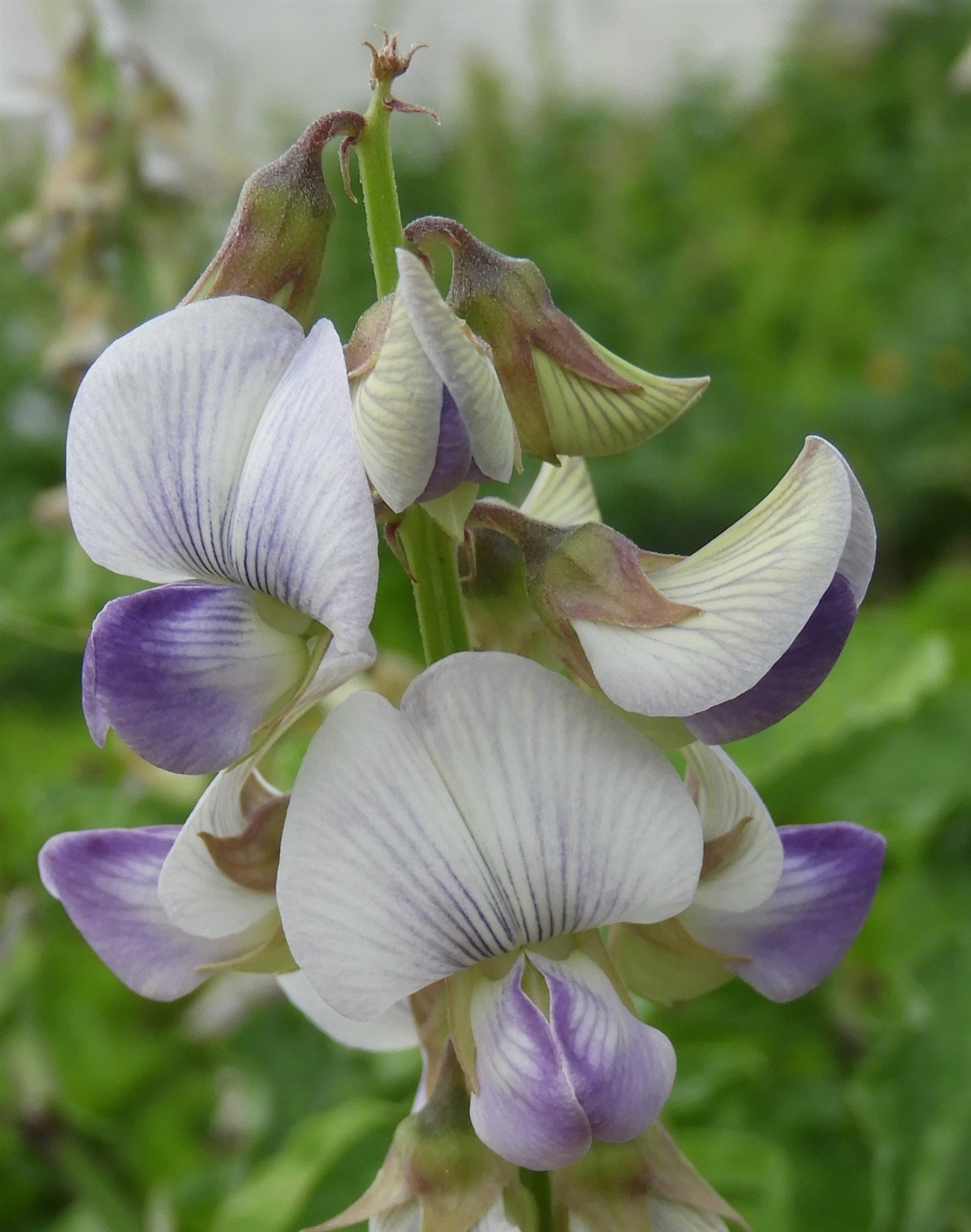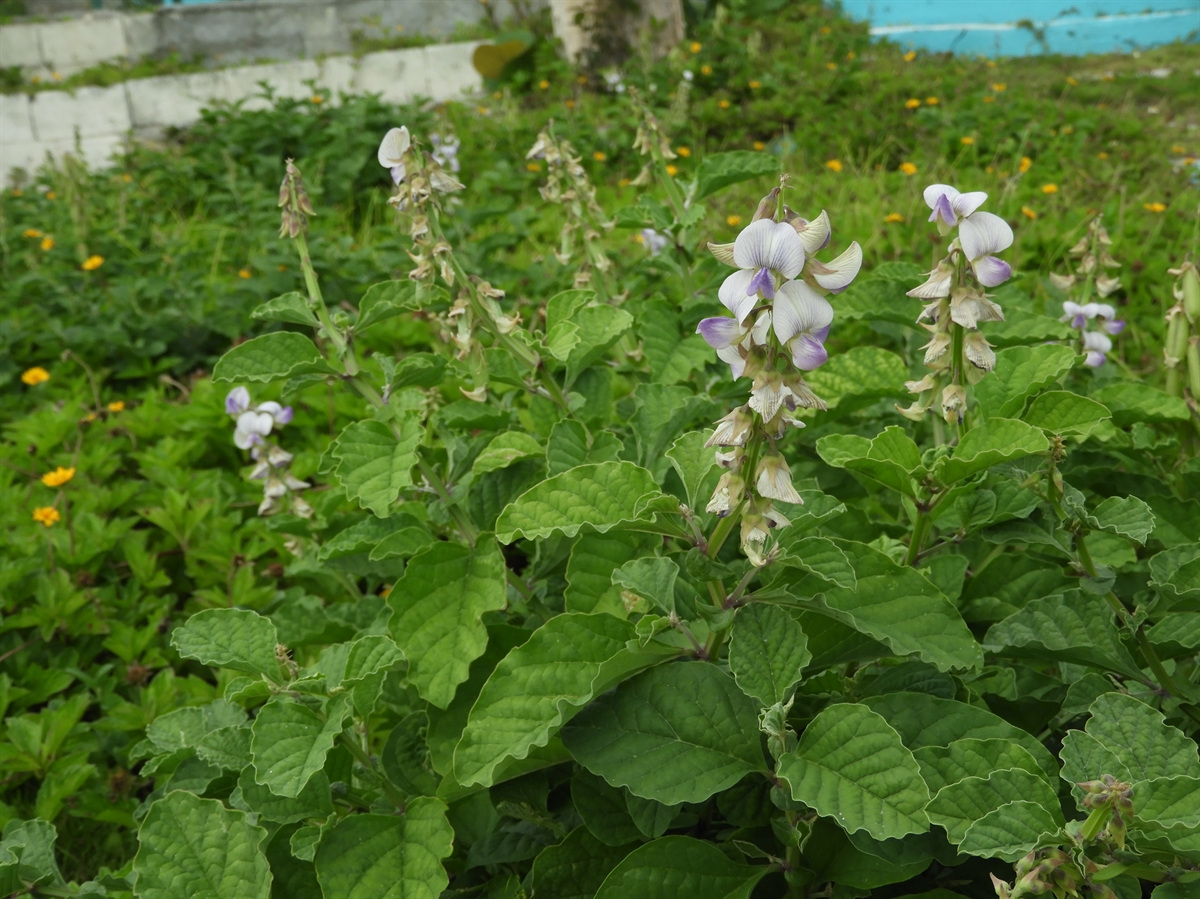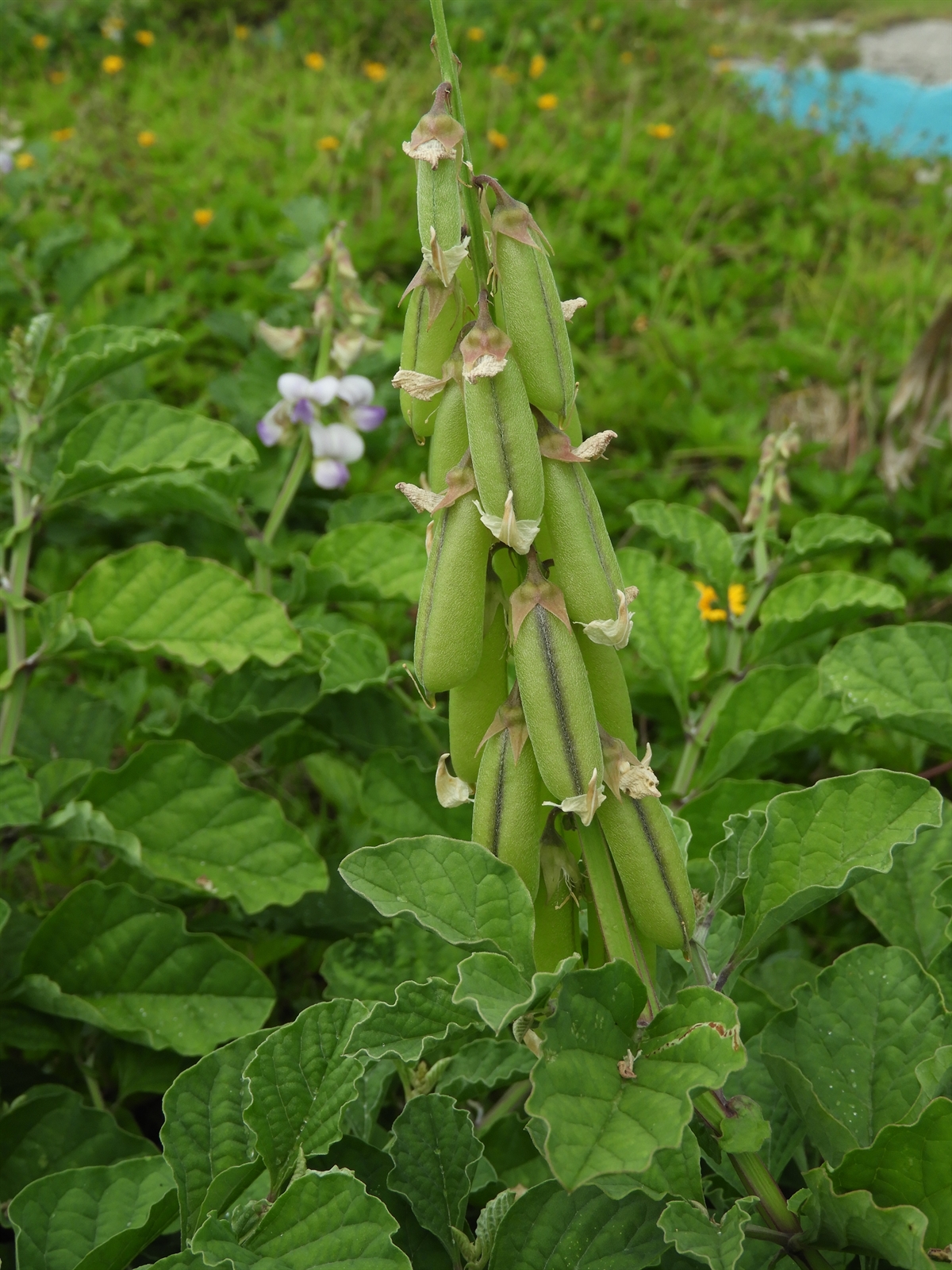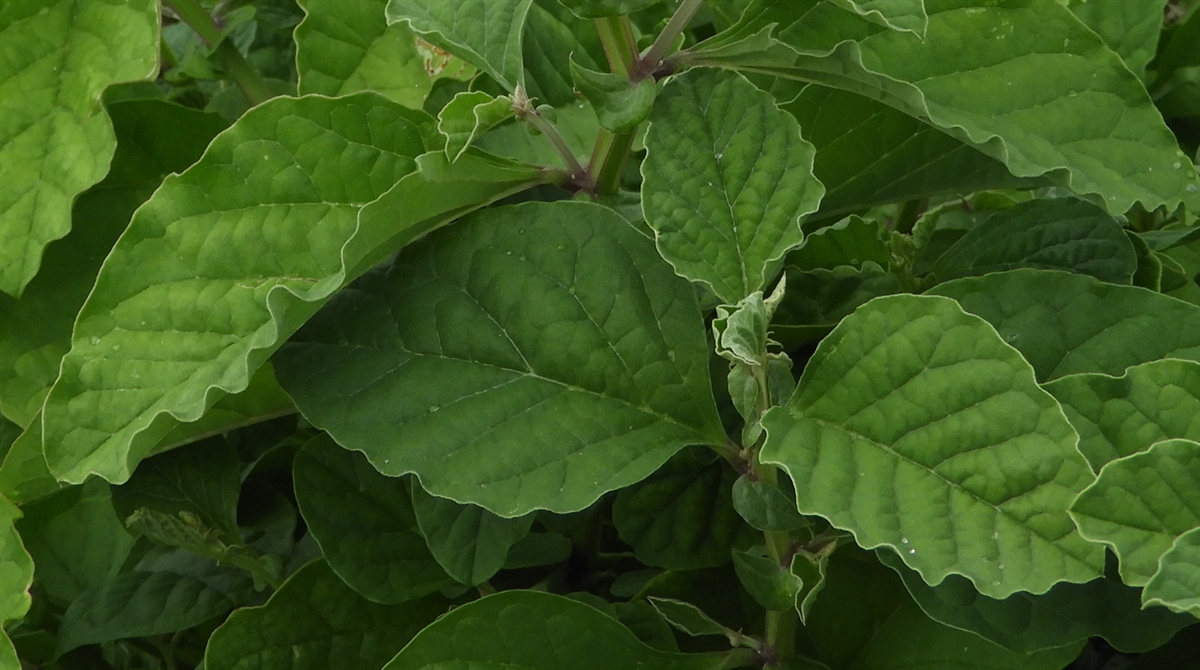Habit: Crotalaria verrucosa grows as an annual or perennial as a ground cover or erect as a tall herb to 100 cm in height. New vegetation is pubescent. The simple leaves are arranged alternately, ovate/elliptic with a mucronate leaf apex and an entire and undulate leaf margin. Both the ab and adaxial leaf surfaces are minutely pubescent.
The complete, perfect, zygomorphic flowers are terminal or axillary in groups of 1-5 flowers. The calyx has 5, partially fused, pubescent, green sepals forming a tube with the sepal lobes the same length as the tube. The corolla has 5, purple/pink and white petals, the upper enlarged to form the banner (has purple lines at base) and the lower 2 fused to form the keel. There are 10 diadelphous stamens. The ovary is superior and has a single locule with numerous seeds. The fruit is a pubescent, brown legume that becomes inflated and is up to 2 cm in length at maturity. Before dehiscence the seeds become loose within the legume and make a rattling sound.
Habitat: Crotalaria verrucosa grows in Human Altered environments (old fields, yards roadsides).
Distribution: Crotalaria verrucosa is NOT native to the Lucayan Archipelago but occurs on most of the island groupings. It is native to Asia, Australia, and the Indian subcontinent. It is widespread now in tropical and subtropical regions.
Medicinal/Cultural/Economic usage: Other Crotalaria sp. has been used to treat colds in the Lucayan Archipelago.



